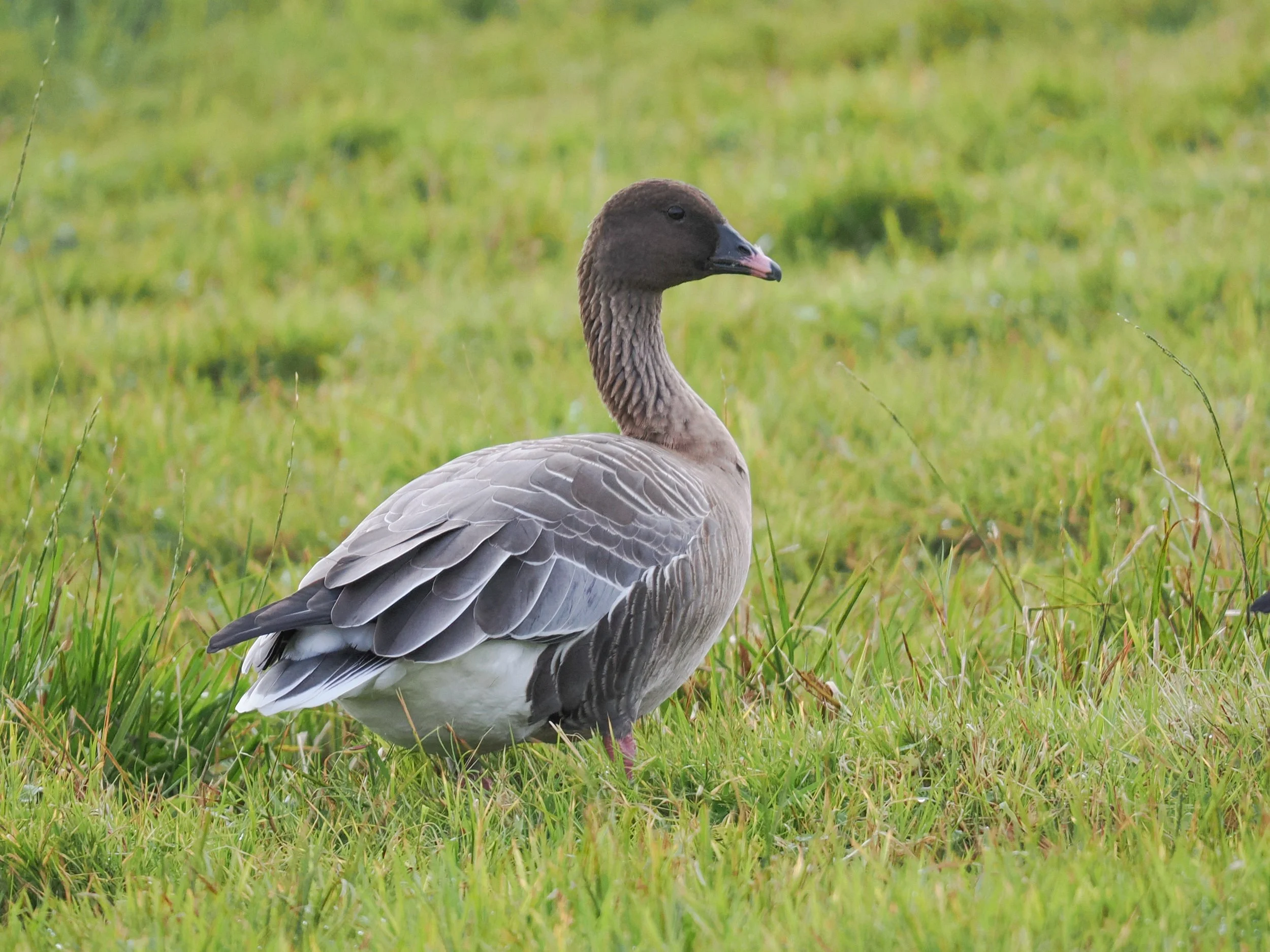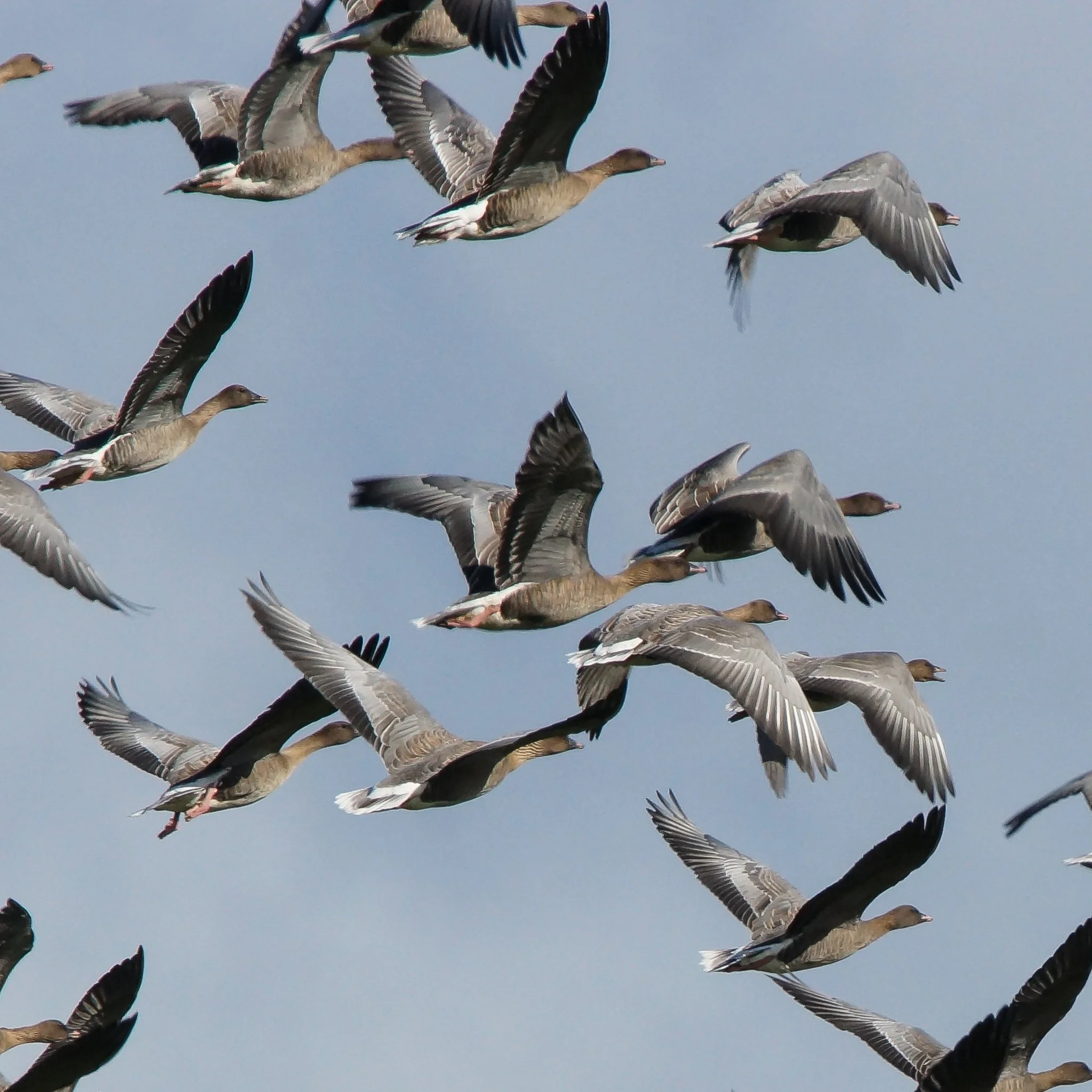Jack’s Lane and Hellrigg Wind farms
creating refuges for pink-footed geese
Collision risk is a well-documented risk for birds at wind farms, particularly where large numbers of protected species occur at the site. Pink-footed Geese are widely distributed in winter in the UK and often occur in areas with potential for wind farm development. Novel solutions were needed to avoid conflict, and these have come through the provision of goose feeding refuges. We have now worked on a range of sites to deliver this solution which can both reduce collision risk and provide alternative feeding areas to mitigate displacement.
Successful examples include:
Hellrigg - a 4 turbine wind farm in North Cumbria
Jack’s Lane - 6 turbine wind farm in North Norfolk
Resolving the conflict between renewables and nature
Hellrigg:
After comprehensive baseline bird surveys and detailed assessment, we identified potential issues with pink-footed geese, and a goose refuge (providing alternative feeding away from the wind farm) was implemented as mitigation. Through four winters of post-construction monitoring, we showed the refuge consistently supported substantial goose numbers ranging from 11,000 to 24,700 goose days per winter.
Vantage points surveys showed pink-footed geese rarely used areas within 600m of the wind farm but did not show complete displacement from that zone. Tracking flight lines suggested reduced activity within close proximity with a 59% lower collision risk within a 1 km radius in the first operational year, but increased to 96% four years later. Flight density was markedly lower within 200 m of the wind turbines, while proportionately higher in zones further away, so the geese show evidence of avoiding the immediate area and reducing their collision risk. Additionally, no goose carcasses were found during the surveys - the predicted collision rate using a 99% avoidance rate (as used for the project EIA) over-estimated actual collision risk due to macro-avoidance.
Jack’s Lane:
At Jack’s Lane, our suggested mitigation strategy involved leaving harvested sugar beet tops longer through the winter to increase food availability away from the wind farm. Sugar beet, in contrast, was not grown within 600m of the wind farm site to discourage the use of fields near turbines. Additionally, disturbance was reduced by disallowing shooting on the refuge and adjacent areas to increase its attractiveness to the geese
From pre-construction surveys over 10 years and 5 years of post-construction monitoring, pink-footed goose behaviour showed a strong preference for harvested sugar beet - despite only making up only 12% of the survey area, 45% of flocks were found on this crop. The refuge area was well used with a mean of 1,143 geese, up to 7,580, and extensive use of most refuge fields (from dropping counts). Their flight density was reduced by up to 400 m from the wind farm post-construction, from 90% within 100 m to only 18% within 300-400 m. Again, like Hellrigg wind farm, we showed that an avoidance rate of 99% substantially overestimated casualties - no likely goose collisions were found over five years of operation, and there was strong macro-avoidance of the wind farm.
Each of these examples successfully offset possible collision mortality and habitat loss through displacement by providing alternative feeding areas for pink-footed geese. Therefore, we reduced conflicts between nature and renewable energy development, delivering both clean energy and a biodiversity gain.


